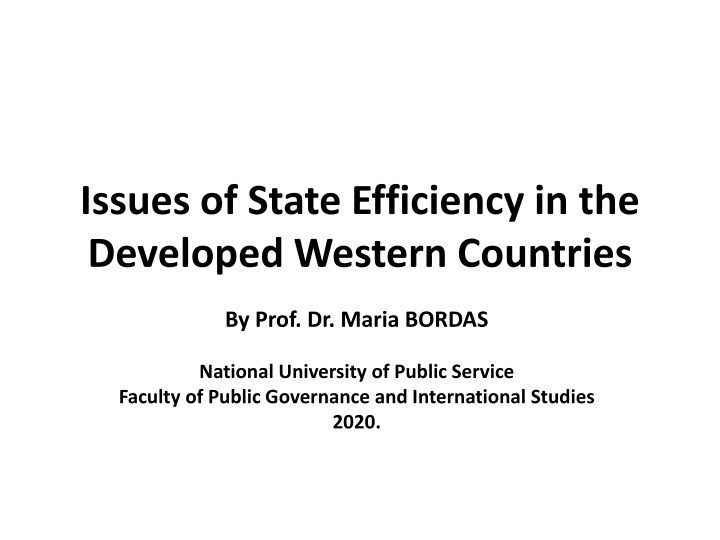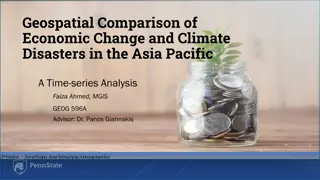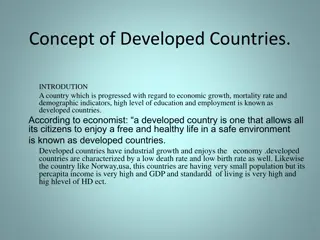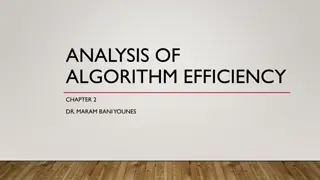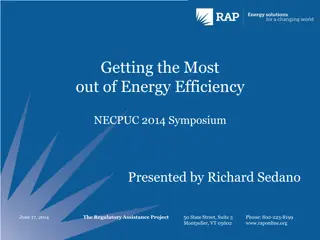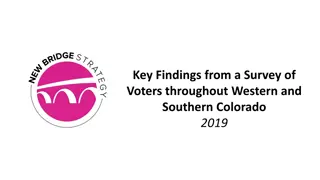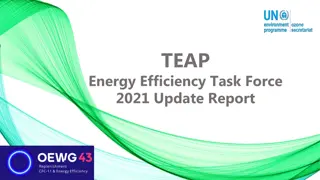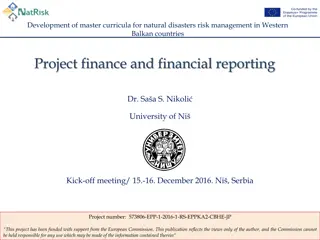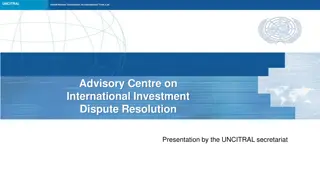Issues of State Efficiency in Developed Western Countries
This content delves into the traditional branches of the state system and public administration within liberal democracies, highlighting the requirements, expectations, and modernization principles. It also discusses the challenges faced by public administration in developed Western countries in terms of efficiency and governance.
Download Presentation

Please find below an Image/Link to download the presentation.
The content on the website is provided AS IS for your information and personal use only. It may not be sold, licensed, or shared on other websites without obtaining consent from the author.If you encounter any issues during the download, it is possible that the publisher has removed the file from their server.
You are allowed to download the files provided on this website for personal or commercial use, subject to the condition that they are used lawfully. All files are the property of their respective owners.
The content on the website is provided AS IS for your information and personal use only. It may not be sold, licensed, or shared on other websites without obtaining consent from the author.
E N D
Presentation Transcript
Issues of State Efficiency in the Developed Western Countries By Prof. Dr. Maria BORDAS National University of Public Service Faculty of Public Governance and International Studies 2020.
Definition of Public Administration Traditional Branches of State System: - Legislation (Parliament) - Execution (Public Administration: central and governance) - Iurisdiction
Public Administration in the Liberal Democracy Liberal democracy: - System of Checks and balances: controlling authorities, such as supervision of legislation ( Supreme Court, Constitutional Court), public finance (State Audit Office), constitutional rights (Ombudsman), Prosecution against State Corruption - Opposition political parties in the Parliament (free elections) - Representative organizations (trade unions), non- profit organizations (NGO-s), lobbies
Requirements for the Public Administration When Public Administration can be operated ideally? Efficient State Good Governance: - It is acting for commonwealth - It is using its capability fully Public Administration Theories and Sciences were always subject to this issue: not just described it
Expectations for Public Administration Numberless principles and requirements: principles of market, under the rules of law, law- centralized, representation of the public interest, freedom from political professionalism, accountability, openness, accessibility, good organization of work, positive work attitudes and flexible administration, optimization of the decision-making process interference, predictability, Question: how to classify them creating models on scientific approach
Modernization of Public Administration Principles and values : It depends on the particular historical age Requirements: new needs in accordance with the changes of the economic and social conditions Dilemma: they are in conflict with the long established traditions For example: constitutional rights (economic, political- liberty, social) against the feudalism, rights of workers in liberal-capitalism, state intervention to solve market failures, liberal democracy and market-oriented economy after the collapse of communist regimes
Public administration in the light of good governance Government in the state system: head: (president, prime minister, chancellor), cabinet, ministers, chancellory, office of prime minister Task: to prepare acts for the legislation, implements acts by government decrees Public Administration as an executive public authority of the government system: liberal democracy vs. autocracy: if the role of Parliament is formal, it is the centre of political power) Public Administration as a public authority that organizes activities of public interest for public goals: providing public services, economic governance, administrative legislation and jurisdiction, law enforcement
Development of the 2 Models of Public Administration 1. Nowdays: "Fine Tune": competitiveness, optimal use of resources, good resources management, cope with globalization, security challenges (immigration, terrorism) Liberal-capitalism: - European Weberian model: state under the rule of law, law- centralized, hierachical, bureaucratic and legally-bound public administration against the feudal absolutism legal guarantees that the state will not intervene in the matters of individuals - American business and management based public administration: (the more you apply business principles in the public sector, the more efficient it will be), decentralized, based on self-governance, management-oriented, legal regulation is not important
Development of the 2 Models of Public Administration 2. Monopoly capitalism: Market failures: required strong state intervention, e.g. stability of economy (no inflation, economic recession, unemployment), market competition, public services, welfare, After the World War II: - European welfare states: high level wealth (welfare services, education, housing, employment) with high redistribution - US public administration: decentralized, self-care, individualist, management-based, business view, market principles, less state intervention (with few exceptions)
Development of the 2 Models of Public Administration 3. Law centralized public administration (Europe): - It is the right of the Parliament with the government to determine public interest. (Majority is determining) - Consultation: with the opposition parties, trade union, representative organizations consensual democracy US: - Checks and balances in the central government (President, Congress: House of Representatives and Senate, Supreme Court) 2 elections: Presidental and Conressional no power concentration right to veto, constitutional impeacgment, right to appoint the member of the Supreme Court, right to annul acts - Lobby-system: strictly regulated by laws, important guarantee of democracy, supplement the 2 political parties: Democrats and Republicans (business lobby is the most infuential)
Development of the 2 Models of Public Administration 3. 1980s: United States: Neo-liberal economic philosophy - New Public Management Europe: Neo Weberian model (infulenced by neoliberalism) After the global economic crisis in 2008 : Strong centralized state is it autocracy? Illiberal state?
History of Public Administration in Western Europe 1. Democratic traditions in the Ancient times - Ancient Greek city states - Ancient Roman Empire 2. Public administration in the feudal states - The early feudalism Italian city states - Development of the towns: capitalist economic relations - The feudal absolutist state 3. The Weberian model in the capitalism 4. Development of the Neo-Weberian model since the 1980-s
Democracies of the Ancient Times State power is not centralized in one hand Political power is not based on religion, but derived from the people Representation of the social classes Election is based on territory Division of the branches of power Checks and balances
Ancient Greek City-States (1) Polis: greek city state (12th century B.C.) Special geographical environments (plain surrounded by mountains) Administrative unit: surrounded by walls, acropolis, villages, lands Places of the sanctuaries Close, autonomous communities (1000 100.000 inhabitants) Military defence: based on the allience of the city states It remains untouched during the rule of conquerors Background: economically strengthened traders and crafts sharing political power
Ancient Greek City-States (2) Athen: openess, freedom of the individuals, culture, arts - Representation of the social classes: peoples meeting - Political parties - Council of the Five Hundreds: public administration - Election system based on territory (50 phules) - Shard-voting and public charge: against the autocracy - Peoples Court (elected) modern principles of criminal law and criminal procedures - Public servants: openly elected
Ancient Greek City-States Sparta: - Monarchy, but developed checks and balances - Constitution - No centers - Military administration - Political ands social equality - Strict ethic rules - Giving lands to the peasants - Underdeveloped trade and craft
Republic of the Ancient Roman Empire Refined democratic institutions Failure of democracy from the B.C. 47 (empire) Developed public administration: public services, budget, tax collection, financial laws, public safety and public order (fire management and police) road building, water supply, canalization, economic administration (wages, prices) postal services, Circus and Bread : organizing circus games, giving free corn to the people Military: administration of the huge empire Failure of the Roman Society: the economy cannot finance the huge public administration, aristocrats do not pay tax, underdeveloped trade, agriculture and craft (mode of production did not develop)
Industrial Development in Western Europe Geographical discoveries: (from the 14th century) mineral resources - accumulation of capital Manufactures: development of textile industry Netherlands: stock exchange, commercial banks England - central bank: issue of banknotes, regulation of financial market Industrial factories: technical develpoment steam engine Agricultural large estates: modernized abolition of serfdom confiscation of the lands of the farmers free workers
Towns in the Feudal State Developed from the 10th century: (in Italy - city states: Venice, Milan, Florence: tradition of democracy in the state system) Centres of the trade and craft (origin of the bourgeois class) Privileges form the monarch (tax allowances, having market, collect fees for the roads, bridges, entering to the market) Own authority system: legislaton, administration, jurisdiction Guilds: having monopolies prices, quality requirements, entry limitation to the market, right to regulate Independent from the feudal large estates
Development of the Capitalist Economic Relations Elimination of the system of the feudal land ownersip: - Serfdom: obligatory services for the landlord and prohibition of movement small own estates, but taxation to the landlord, the monarch and the church - Land ownership limitations: obligatory inheritence order, exclusion of will hinders to get credit - Agriculture: monopoly of the land owner arisrocracy, others cannot pursure business here
The Feudal State (1) Early feudalism: (5th 10th century) - Weak central government - The monarch s power was based on his monopolies (mining, trade, use of roads, bridges, market) and the income of his estates regalies - State system: based on the seigniorial hierachy feudal chain Middle feudalism: - Feudal monarchy: owners of the feudal large estates, nobles, bourgeois class demands political power - Sharing power: parliament and the monarch - Centralized state: all the classes are interested in it (riots of the serfs, wars)
The Feudal State (2) Feudal absolutism: - The monarch centralized his power - The parliament had just a formal role - Public administration and the jurisdiction were controlled by the monarch police state Enlightened feudal absolutism: (Central and Eastern Europe late development) - Reforms: economic policy to support domestic economy, ebolition of serfdom, proportional sharing of taxation - Weak bourgeois class: no bourgeois democratic revolution, or was suppressed - Absolutism in the state system
Ideological background of the Capitalism Enlightenment: rationality, social equality, justice, freedom (17th century) Reformation: freedom of religion separation of the state and the church - secularization (16th century) Bourgeois democratic revolutions: (the economically strenghtened bourgeois class demanded political power) Neatherlands: 16th century, England: 17the century, France: 18th century, Prussia, Austria, Italy: 19th century, Russia: 20the century 500 years in Europe: development of capitalism and the modern state
The Bourgeois Democratic State Aim of the bourgeois democratic revolutions: Prevention of the power concentration and state intervention - against the feudal absolutism predictable public administration Establsihment of the capitalist economic order elimination of the feudal economic and legal limitations (feudal property and guild-system) Tools: Improvement of public law: constitution and public administration under the rule of law Principles: sovereingty of people, constitutionalism, state under the rule of law, divison of power, political-liberty rights
Public Law Character of the Bourgeois State Duality of Public and Private Law: - Public administraion can act only if it is entitled by laws hierarchy of the laws - Individuals and civil organizations can do anything that is not prohibited by laws: respect of autonomy Dominance of public law: - Constitution: determines principles for the legislation limitation of the state intervention - Public administration: only on the basis of acts and in thier framework under public law
Features of the Liberal State Under the Rule of Law Sovereignty of people: (earlier: state sovereignty parliamentary sovereignty) parliament is the representative of the people and the source of the political power Relevance: against the absolutism Constitutionalism: constitutional principles about the state system, the economic order, the political and liberty rights, the rights of the enterpreneurs (later social rights) Relevance: the actions of the state cannot violate it
Principles of the Liberal State Under the Rule of Law State Under the Rule of Law: - Acts passed by the Parliament regulates the basic social-economic relations - Public administration can act only in the framework of the acts Division of the power: - Legislation, public administration and jurisdiction are separeted - Public administration: under the legislation - Jurisdiction: independent, but just apply laws, not equal
Constitutional Rights of the Individuals and Entrepreneurs (1) Political and liberty rights of the individuals: legal equality, freedom of individuals, freedom of religions, freedom of thought, right of public meeting and assembly, regulation of the crimes and the crimimal procedure by acts, right to fair legal procedure, equality before the acts, right to human dignity Aim: protection of the autonomy of the individuals and the enterpreneurs
Constitutional Rights of the Individuals and Entrepreneurs (2) Economic rights: - Freedom of market and undertaking - Right to ownership - Right to contract - Proportionate sharing of taxation - Ecomonic legal equality Practice of the constitutional rights: it can be limitated by the legislation in necessary and proportional extent (interpretation of constitutional court)
Constitutional Rights of the Individuals (3) Social rights: (second generation constitutional rights) as a result of the fight of the trade unions - Based on solidarity (powerty is not the fault of the individual, but is related to economic failures and social inequality) - The state shoulders the wealth of the individuals - Social rights in the constitution: obligates the government to establish social system (state budget- based or social insurance based) - Social rights: social allowances for the disabled, health care, shelter, unemployment allowances, pension, education, culture, etc.
Features of the Weberian Model Centralized and legally-bound public administration Based on the hierarchy of the laws Refined legal regulation and legal theories (later overregulated) Duality of public law and private law Aim: - Repsect the autonomy of the individuals and the enterpereneurs (later having a purpose in itself) - State under the rule of law and predictibility
Constitutional State Under the Rule of Law (1) Problems of the division of power: - Political parties having 2/3 majority in the parliament dominate in the legislation - Control public administration in the way of forming the government: politically interwoven - Jurisdiction applies laws, but not a political counterbalance and independent - Predomination of the government against the legislation: the parliament is not interested politically to vote against the governmet s proposals- regulation by decrees
Constitutional State Under the Rule of Law (2) Principle of checks and balances: Aim: limitation of the power of the government and the legislation Tools: controlling public authorities - Constitutional court: annuls laws, if violates the provisions of the constitution - Ombudsman: if constitutional rights of the individuals are violated in concrete cases - State Audit Office: controls the management of state property and the the use of public money - Media and civil organizations: power of the publicity
Crisis of the Liberal State Under the Rule of Law the Intervining State Public interest: - Liberal state under the rule of law: the parliament and the public administration act for the public interest - In the practical reality: several interests of the social groups public authority in the hand of the government Tasks of public administration widened: (earlier just the supervision of the rules of the games and the assurance of the public order and public safety) - Provident, servicing, regulatory state (economic anomalies, poverty, need for infrastructure) - The effort to make legal regulation more and more perfect hinders solving the problems of public interest
Features of the American public administration Not the European-type public administration developed: - Settlers in the colonies: farms, sporadic settlements, small towns - Ethics: Protestant puritanism community ideas hard work - Law: based on the decision of the citizens, not by the central public authority regulates the comunity relations - Codex: governance, public servants, elections, jurisdictions, business life, e.g. road building, transport, fishing, trade, storing, prices, wages, land register, etc. - Public administration: decentralized and self-organizing
The American state system Constitution: state system, division of the branches of power, scope of the member states, political and liberty rights, amendment of the constitution Institutions to prevent the power concentration: - Legislation (Senat and House of Representatives) - Public administration (president): elected separately not interwoved with the Congress politically - Decentralized public administration: autonomy of the member states and the local governments
System of Checks and Balances (1) Function: every branch of power has the right to control the others Congress: (Senate, House of Representatives): can vote against the veto of the president and to bring a charge (impeachment) President: right to propose an act and veto against the acts, appoints the members of the Supreme Courts
System of Checks and Balances (2) Supreme Court: - Court of appeal - Supervises the administration (impeachment against the president) - Interprets, supervises and annuls the federal laws and tha laws of the member states The constitution does not regulate it: just guardian Dispute: sufficient rights are required to it does not change the balance of the branches of power
Principles of the American state system 1791. Bill of Rights: (supplement of the constitution) - Political and liberty rights: freedom of thoughts and press, right of public meeting and assembly, freedom of religion - Special rights: right to weapons, prohibition of house search and confiscation Ideas of the enlightenment: sovereingty of people, freedom, legal equality 1865. (supplement of the constitution): abolition of the slavery, prohibition of the racial discrimination Liberal democracy: the most typical and perfect
The American economic liberalism Economic liberalism - economic efficiency: - special ways - Colonial independence - Abolition of the slavery (civil war in the middle of the 19the century) Industrial great power spectacular economic development: - New forms of transport: railway, roads, bridges, canals, steamship - New markets for the farmers - Wealth in natural resources - Unlimited lands for the agriculture: technically modernized farms
Questions of the economic intervention Right for the government to intervine: basically prohibited it is against the public interest - Beginning of the 20th century: economic recession and crisis, high unemployment, collapse of the financial market - Expectation for the government intervention: Supreme Court: the government is allowed to regulate the economy, if it is needed in a sector of the economy
Fields of Government Intervention Central bank: stability of the financial market Regulation of economic activities if public interest requires: railway, roads, restaurants, storehouses, prices, wages, quality requirements, state support (land, tax allowances) Anti-trust law (Sherman): against monopolies (competititon law)
Tools of Government Intervention Prior events of the New Deal: - Senate and Supreme Court do not support - Roosevelt: appointed new judges loyal to him to the Supreme Court Its economic policy: (fiscal policy: increase of the demand) - Social and employment programs (increase incomes) - Taxes are imposed to wealthier classes - Regulation of the financial market - Stimulating private investments government investments
Economic liberalism Individualism: equality of the possibilities everybody is responsible for his or her wealth poverty: failure of the individual and moral deficiency Social rights: not regulated in the US Constitution no government responsibility Relevance of the New Deal: - Public interest not the interest of the business sphere - Managed the economic crises, started up economic development - 2nd World War: military industry, technical develpoment From 1970-s: economic development slowed down (oil crisis, Vietnam war)
The Neoliberal Economic Policy Ideology: - More market and less state the state has to withdraw fro those areas, that can be opetarted by market mechanisms more efficiently - Welfare: high taxes - hinders economic development (occasional social and employment programs by the democrats, no government responsibility for the welfare) - Emphasize efficiency of public administration Background: - Business opportunities for the business sphere in the public sector - The middle class did not want to finance the lower classes (people of ghettos)
Traditions of the American Public Administration(1) Management-based: - Operation of the public administration is similar to the business enterprises (except: politically determined) - The more you apply business and management principles in the public administration, the more efficient it will be. - Efficiency: if a service or state-activity can be put under market mechanisms, it is unefficient if government provides it market prices no free or low prices
Traditions of the American Public Administration(2) Public interest: - Several social and economic groups - Lobby-system: important supplement of the political parties - democratic or not? - Mapping the several interest of the social and economic groups selection - Public policy making: based on management principles
Traditions of the American Public Administration(3) Implementing public tasks: - Not by legal means, but management methods - Administrative law has less importance - Emphasis on how to manage . - No duality of public law and private law - Government intervention in the economy only in the field of regulation of economic activities: costumer protection, quality requirements, financial market, competition supervision
Traditions of the American Public Administration(4) Providing public services: Infrastructural public services: - Private ownership (state subsidy) - Natural monopolies - Price regulation and customer protection by public utility commissions Welfare services: - No government responsibilty no welfare institution system - Business principles competitition - market prices - balanced supply and demand importance of customer choice
The Chicago School Monetary economic policy: only the supervision of the financial market stability Fiscal policy: inefficient governments are corrupt or uncapable cannot adapt to the quick economic changes Market mechanisms in the public sector: the market is more efficient than the government intervention public interest Results: more efficient public administration less taxes, better quality and client-oriented public services, extended customer choice
